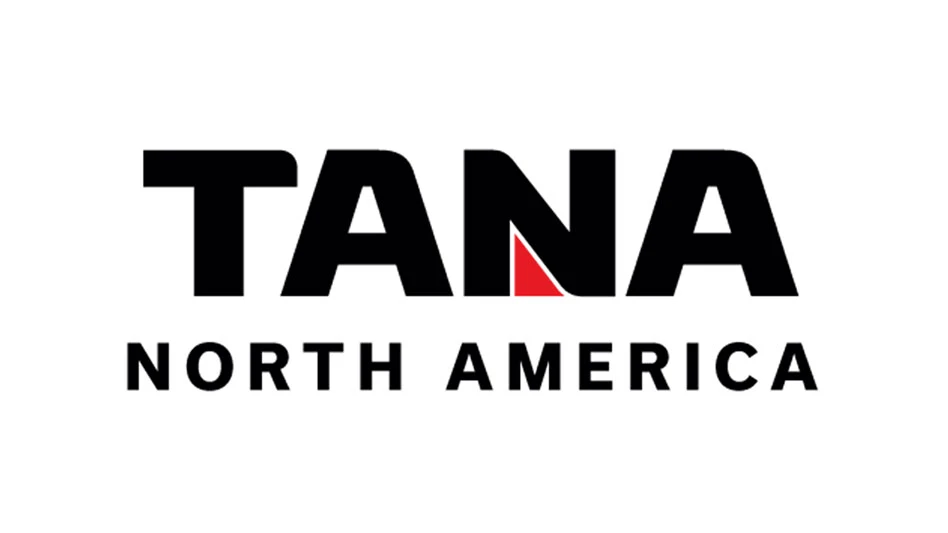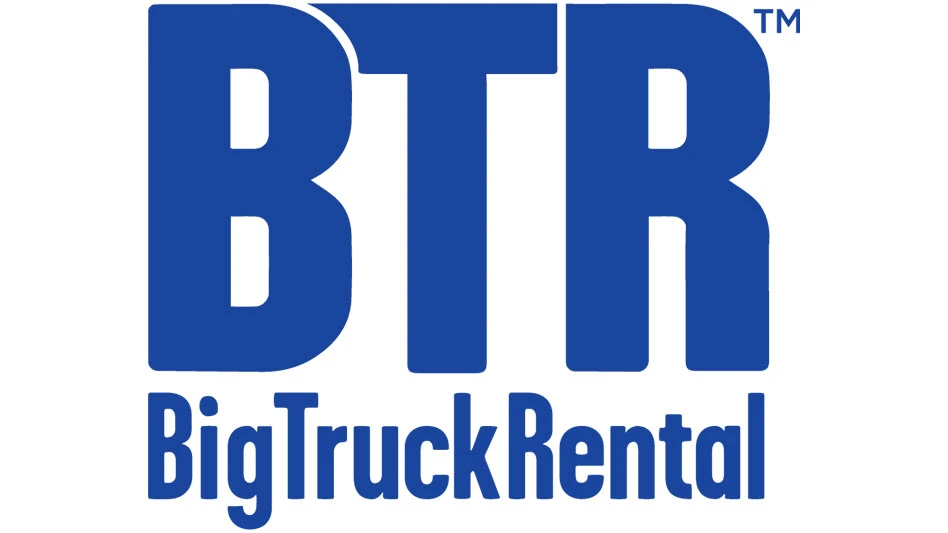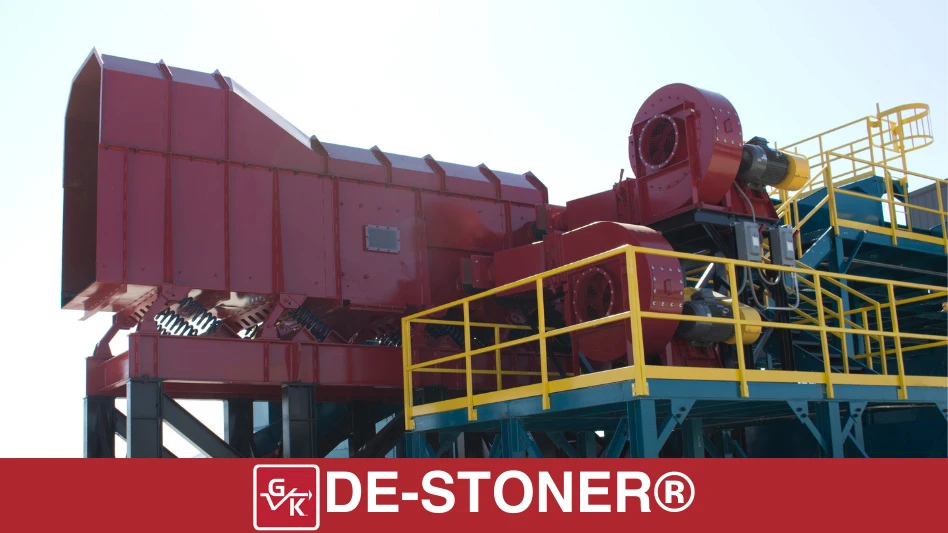Genesis’ largest shear at work in Australia
Liberty Industrial, a demolition firm based in Glebe, Australia, has commissioned a new Genesis GXT 2555R mobile shear.

With a cutting force of more than 3,000 metric tons, the custom-made GXT 2555R attachment is designed to mechanically shear large heavy steel structures with ease and to be capable of cutting through a 48-inch steel I-beam in a single bite.
The shear was designed and manufactured in Superior, Wisconsin, by Genesis Attachments LLC, Superior, Wisconsin, specifically to work in tandem with Liberty Industrial’s R994 demolition excavator by Liebherr, Newport News, Virginia.
Weighing in at more than 31 metric tons, the shear—when paired with Liberty Industrial’s Liebherr R994—brings the combination to a gross weight of more than 260 metric tons. The shear itself is 25.75 feet in length and 9.5 feet tall. It has a jaw opening of 4.6 feet and a depth of 4.6 feet.
Liberty Industrial Director Clinton Dick says the GXT 2555R is perfect for heavy industrial demolition projects like the demolition of oil refineries, power stations and mining infrastructure. “This technology will make the demolition environment a safer and more efficient workplace,” he comments.
The shear is making its debut at Liberty Industrial’s Munmorah Power Station Demolition Project. The project involves the removal of a 1,400-megawatt coal-fired power station and is the largest power station demolition project to be carried out in Australia to date, according to Dick. The shear will be put to work processing large structural steel members associated with the heavy boilers, turbine hall, precipitators and filter fabric structures.
“The obvious key advantage is that we can now demolish substantially larger and heavier structures without the need to preweaken them, reducing any reliance on working at heights and removing the risk of personnel preweakening structures,” says Liberty Industrial Director Simon Gill.
“Reducing the need for working at heights and the removal of personnel from the demolition work face has been the cornerstone of our risk minimization strategy,” adds Gill.
ZenRobotics upgrades recycler, supplies system to C&D facility
_fmt.png)
Plexus Recycling Technologies, Westminster, Colorado, announces that Austin, Texas, recycling company Recon Services Inc.’s 973 Materials will be the first facility in the U.S. to install a sorting line from Helsinki, Findland-based ZenRobotics in its construction and demolition debris (C&D) recycling facility.
The ZenRobotics Recycler is designed to separate large and heavy objects of up to 45 pounds. The robot’s smart gripper opens from ¾ inch to 20 inches, allowing you to sort of objects of various shapes and sizes.
The smart gripper is designed to meet the demands of solid waste and to avoid slipping and dropping objects. Typically, each robot arm can sort and move around in a 6½-foot-by-6½-foot-area, ensuring the systems high sorting performance.
The recycler has been trained to sort plastics by polymer, C-wood and scrap metal by color and by shape.
Caterpillar CEO to retire in 2017

After more than 41 years with Caterpillar Inc., Peoria, Illinois, Chairman and CEO Doug Oberhelman has elected to retire, effective March 31, 2017.
The company’s board of directors has elected Jim Umpleby, currently a Caterpillar group president with responsibility for energy and transportation, to succeed Oberhelman as CEO. Umpleby, a 35-year veteran of the company, will join the Caterpillar board of directors and become CEO effective Jan. 1, 2017. He was named group president and a member of Caterpillar’s executive office, effective January 2013.
Oberhelman will remain as executive chairman of Caterpillar until March 31, 2017. Upon Oberhelman’s retirement, Dave Calhoun, a current member of the Caterpillar board, will assume the role of nonexecutive chairman of the board. Ed Rust, presiding director of the Caterpillar board, will remain on the board.
US-made construction equipment exports decrease in 2016
Exports of U.S.-made construction equipment fell 25 percent overall for the first three quarters of 2016 compared to exports from January to September 2015, for a total $8.2 billion shipped to global markets.
All world regions were in decline from single-digit drops for Europe and Central America to decreases in the 50 percent range for Africa and South America, according to the Association of Equipment Manufacturers (AEM), Milwaukee, citing U.S. Department of Commerce data.
“For the past 15 quarters U.S. exports of construction equipment declined year over year and in the third quarter of 2016, that trend remains unchanged. A key factor affecting the reduction in exports is most likely due to the strong dollar making U.S. manufacturers less competitive in the global marketplace,” AEM’s Benjamin Duyck, director of market intelligence, says. “Our expectations for the fourth quarter remain subdued as the U.S. dollar is experiencing its longest rally in 16 years. Investment is flowing to the U.S. and U.S. stocks, driving up demand for our dollar and inadvertently affecting our competitiveness.”
McCloskey International launches washing equipment division

McCloskey International, based in Peterborough, Ontario, launched its newest business division, McCloskey Washing Systems (MWS), focusing on washing and classifying across multiple applications. The new unit will design and manufacture a full range of mobile, modular and static material and mineral washing equipment.
“Our customer-driven approach to product development has led us to invest significantly in the establishment of this new division, with the aim to be the design and manufacture of high quality washing equipment that is easy to install, maintain and operate,” says Paschal McCloskey, president and CEO.
McCloskey Washing Systems will open its manufacturing facility in Co. Tyrone, Northern Ireland, in April 2017. Introduction of the division and product line within the global dealer network has begun.
Lindner introduces shredders customized to produce RDF
The new Polaris 2200 and 2800 single-shaft shredders made by Austria-based Lindner Recyclingtech have been designed to perform single-step shredding of untreated household refuse as well as industrial and commercial waste.
A typical application area will be processing refuse-derived fuel (RDF) to be used instead of fossil fuels at cement kilns (calciners) or in thermal power plants, says Lindner.

Because the Polaris shredders run at a particularly low speed and with correspondingly high torque, their knives cut the input material with enormous power, as required by the single-step process, according to Lindner.
Type 2200, with a feed opening of 13.4 feet by 10.8 feet and a rotor length of 6.9 feet shreds, for example, up to 22 metric tons of commercial and industrial waste per hour.
The Polaris 2800, with a feed opening of 15.6 feet by 7.7 feet and a rotor length 9.2 feet, achieves a volume of up to 32 metric tons per hour. Depending on the choice of screens, the final grain sizes are between 2 and 4.7 inches.
Lindner says the single-shaft shredders have been designed to ensure constant output with uniform grain size, and that “every individual component of the system is noted for the robustness that is typical of Lindner products.”
With the development of the Polaris single-shaft shredder, Lindner says it is supporting the trend toward the optimum processing of RDF to ensure it is coordinated to the application it is needed for.
Companies that process RDF for captive use thus have the possibility to make their production more cost-efficient while customers who process waste to offer it to a larger market as RDF can achieve higher margins, says the firm.

Explore the January 2017 Issue
Check out more from this issue and find your next story to read.
Latest from Construction & Demolition Recycling
- Fleetio integrates Maintenance Shop Network add-in
- C&D World session preview: Key strategies for effective fleet maintenance
- Rotochopper hosts equipment owners at annual training program
- EAF mill underway in California
- On the move
- Viably teams with Turmec on materials processing systems
- Tight supply poised to keep recycled steel prices buoyant
- Untha shredder prepares SRF in the UK





